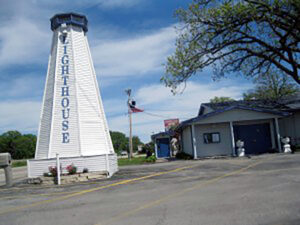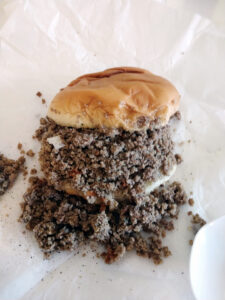2022 CHOICE AWARDS — Cityview’s Hall of Iowa Culinary Excellence
7/6/2022 The idea for the CHOICE awards originated eight years ago and was inspired by Japan’s Living National Treasures. That program honors “preservers of important intangible cultural properties.” In the years after World War II, anxiety arose in Japan that their unique cultural traditions — noh, kabuki, origami, kumi, sumo, teapot ceramics, noodle making, etc. — might be swamped by the Western culture. By honoring revered masters of these arts, they saved them and made them important to a new generation.
The idea for the CHOICE awards originated eight years ago and was inspired by Japan’s Living National Treasures. That program honors “preservers of important intangible cultural properties.” In the years after World War II, anxiety arose in Japan that their unique cultural traditions — noh, kabuki, origami, kumi, sumo, teapot ceramics, noodle making, etc. — might be swamped by the Western culture. By honoring revered masters of these arts, they saved them and made them important to a new generation.
Our original intention at CITYVIEW was to do something similar for Iowa’s venerable, living food pioneers. That evolved into a veritable hall of fame for people and food institutions that gave our city and state a singular quality and identity. CITYVIEW’s Hall of Iowa Culinary Excellence (CHOICE) awards began at a time when locals rued the passing of two of the most memorable food icons in Iowa history. The Younkers Tea Room was lost in a fire, and Dahl’s stores were sold or closed.
For the charter edition of the awards, we focused on venerability — enduring traditions and pioneers who were still alive. The Japanese word “sabi” refers to a kind of beauty that is attained by aging, when an object’s elegance is evidenced by a changing patina. The word is most often applied to tea pots whose glaze has been changed by decades and even centuries of having tea intentionally poured over the top to drip down over the pot. In that spirit, our charter members in 2015 all had histories dating back to at least the mid-20th century. Several topped more than a century of service to central Iowa. The following year’s class of honorable food pioneers was younger, but all blazed new trails that influenced the culinary scene of Des Moines in unique ways. Since then, we have expanded upon both categories of excellence.
This year’s class reinvigorates the venerable status. Some of these institutions have changed life for all America and the world. A couple of them are probably taken for granted, until one thinks about how much texture they added to our food culture.
|
CHOICE CHARTER MEMBERS
ADDITIONAL PAST INDUCTEES
|
Fareway Stores
Four score and four years ago, the first Fareway store opened for business in Boone. Self-service grocery stores were a new concept then. Shoppers took to the notion of picking out their own groceries rather than submitting a list to an attendant. The Iowa Liquor Board would not provide that service for another 51 years. Fareway shoppers also liked shopping carts, which were so new at the time that they were called “rubber-tired gliders.”
Fareway’s first ad featured coffee at 14 cents a pound and Wheaties for 10 cents a box. Clear back then, the store was committed to only selling USDA choice or higher graded beef. Both sirloin and T-bones were advertised for 25 cents per pound.
As a meat supervisor of large chains, founder Paul S. Beckwith noticed a gradual shift in how both employees and customers were being treated. He envisioned a store where happy employees served satisfied customers. The Boone store was successful enough that additional locations soon were added in Ames, Webster City, Fort Dodge, Estherville, Carroll and Oelwein.
When it came to choosing where the next Fareway would be built, Beckwith was fond of saying “follow the black dirt.” He believed the company’s values were in perfect sync with the country’s rural Midwest — people who were hard-working, understood the value of a dollar, and to whom family was everything.
According to their corporate website, the name “Fareway” was originally chosen to convey several meanings: a wide range of “fare,” or foods; a “bill of fare,” a commonly used phrase for a grocery list; and treating customers and employees in a fair way.
Today, Fareway is known for its full-service meat departments, farm-fresh produce, competitive prices, and a level of customer service that includes asking if an employee can carry your groceries to your car. They are one of the largest employers in Iowa, currently operating more than 120 store locations in Iowa, Illinois, Minnesota, Nebraska and South Dakota, with more store openings coming soon. They also own Fareway Meat Markets in four cities and Brewers, a popular meat distributor from Des Moines.
Seed Savers Exchange
Seed Savers Exchange was founded in Missouri in 1975 by Diane Ott Whealy and Kent Whealy. Diane’s grandfather entrusted her with two heirloom seeds — “Grandma Ott’s morning glory” and “German Pink tomato.” Those seeds were brought by Grandpa Ott’s parents from Bavaria when they immigrated to Iowa in 1884. Diane began thinking about the importance of the inheritance and about how many other unique heirloom seeds were being lost to future generations. She determined to form a network of gardeners interested in preserving heirloom varieties and sharing seeds. Today, with 13,000 members and 20,000 plant varieties, Seed Savers Exchange makes its home on 890 scenic acres in Winneshiek County, Iowa, at Heritage Farm.
Why is this so important? Humans, and a strangely high numbers of their pets, rely on plant materials for clothing, shelter and transportation. We admire beautiful places because of the diverse plants that grow there. What would the north woods be without white birches, the Texas Gulf Coast without bluebonnets, or the Midwest without its green and amber fields of grain?
Most importantly, we eat plants. Plants determine the cuisine of a region and keep mammals, insects, birds and reptiles alive. They make up more than 80% of the human diet. The abundance of plant varieties is encompassed in the word “biodiversity.”
But diversity in the plant kingdom has been on the run since modern agriculture began tearing out orchards, gardens and grazing fields to plant more cash crops. To understand the danger of this, look at the Irish potato famine. If Europeans had planted several different types of potato, like South Americans had done for centuries, there would have been no famine — and likely many fewer Irish bars in America.
Seed Savers Exchange conserves biodiversity by maintaining a collection of more than 20,000 different varieties of heirloom and open-pollinated plants, varieties with the ability to regenerate themselves year after year. These seeds have the power to withstand unforeseen pestilence and plant diseases, climate change and limited habitat. In the last century, the world lost 75% of its edible plant varieties. According to the United Nations’ Food and Agriculture Organization, only five cereal grains now make up 60% of our calories. A system that depends so heavily on so few crops is fragile.
In the United States in particular, genetically engineered (GE) plant varieties have had a devastating impact on biodiversity. According to the USDA’s Economic Research Service, since their commercial introduction in 1996, use of GE crops by U.S. farmers has increased steadily. In 2013, 170 million acres of GE crops were planted in the U.S., seeds that are patented and cannot be saved and planted again next year.
In Diane Ott Whealy’s words, “We can only preserve heirloom seeds through active stewardship. If we don’t use them, if we don’t allow them to grow again, they become lost.”

Firebrand farmer Dick Thompson died in 2013, but his vision and philosophy lives on in Practical Farmers of Iowa. Photo courtesy of Practical Farmers of Iowa.
Practical Farmers of Iowa
Practical Farmers of Iowa was founded in 1985 when farmers were under great economic pressure. Evidence of the negative ecological consequences of current farming practices was mounting. The collapse of commodity prices threw doubt upon the economic sustainability of agriculture. The demise of thousands of farms was draining the vitality of rural communities. Farmers sought ways to bring greater diversity to their farms as a means of reducing the need for costly inputs. A group of like-minded farmers came together looking for answers to how to make crop and livestock diversity work for them.
Larry Kallem, a staff member with the Iowa Institute for Cooperatives in Ames, attended a field day at the Boone-area farm of Dick and Sharon Thompson. Impressed by the scientific methods the Thompsons used to conduct research trials on their farm — and their sustainable, low-input, practical approach to farming — Kallem invited the Thompsons to present at an Iowa Institute workshop on low-input farming.
Kallem and the Thompsons then co-founded the fledgling organization, rallying farmers across Iowa to conduct randomized, on-farm research to improve their profitability, efficiency and stewardship — sustainable agriculture goals that became the heart of Practical Farmers’ mission to strengthen farms and communities through farmer-led investigation and information-sharing.
Early work focused on field crops and livestock. Later, interests expanded to include horticulture, small grains, on-farm energy and local foods. In recent years, Practical Farmers has experienced rapid growth. Today, membership comprises nearly 5,000 farmers and friends of farmers located across Iowa and beyond.

The Lighthouse shines with gangster lore.
The Lighthouse Inn, Cedar Rapids
“Linn County has many interesting places on the outskirts of towns, in large part because we had Prohibition going back to 1915. So ‘supper clubs’ sprouted up on the edges of towns,” historian Mark Stoffer Hunter explained.
The Lighthouse began in 1912 as a supper club with cabins in back. The Lighthouse shines with gangster lore. In April 1934, John Dillinger and Homer Van Meter spent a few nights in Evening Star Tourist Camp outside Cedar Rapids. They tried to rent a cabin but were told the place was not yet open for business. So, they broke in and made the place home for a few nights. That was in the midst of Dillinger’s infamous run as the FBI’s “Public Enemy No. 1.” During that period, they ate at The Lighthouse. Dillinger’s gun accidentally went off once at the supper club, and a bullet stuck in the wall, like an icon. He then fled the place and escaped for three more months before he was killed in Chicago.
An even more famous gangster also stopped here. Al Capone cooled off there, too, according to a newspaper in which former Lighthouse bartender Theo “Mugsy” Davis talked about serving “Scarface“ in 1932. Today, the supper club attracts crowds of both golden agers and young kids on weekends, year round. Jazz trios have come from the legendary Cotton Club in New York City. The building is original but has been remodeled so many times only the bar is true to the old design.
Chuck’s
Chuck’s was opened in 1956 by Chuck Bisignano. It soon moved from a bar to a restaurant with Calabrese specialties and a legendary pizza oven. Chuck’s daughter Linda Bisignano ran the place from Chuck’s death till her own a decade ago. She was a larger-than-life figure who instituted a huge Thanksgiving feast for the needy. Emily Jones bought the place in 2014, keeping all traditions and remodeling to the tune of $1.5 million.
Archie’s Waeside, Le Mars
Established in 1949 by the late Archie Jackson, Archie’s has been a family tradition for more than 70 years. Having escaped from Russia during the Bolshevik Revolution, Jackson spent time learning the art of cutting and dry-ageing beef in packing houses in Sioux City in the 1930s and Los Angeles in the 1940s. The techniques he learned were used to create a distinctive flavor of steak that he featured on the original menu at Archie’s, which consisted of a sirloin steak, pan fried chicken, deep fried shrimp, and chicken livers and gizzards. Aided by his daughter Valerie Rand, Archie’s business grew and underwent building expansions in 1957 and 1963 to increase the size of the kitchen, coolers, garden and dining area. Val’s youngest child, Robert Rand, took over the family business in 1995 at the time of his mother’s retirement.
Archie’s, with lazy Susans that include house cured corned beef, is a popular spot with national airplane pilots who meet there regularly from all over America. It is one of only two Iowa restaurants to win a James Beard American Classic award.

Loose meat sandwiches go by many aliases in Iowa.
Loose meat sandwiches
They are adored in Iowa and barely known elsewhere. Best known as Maid Rites, they also go by the aliases “taverns,” “tastees,” “Charlie Boys,” “made rights,” “beefburgers” and, when tomato sauce is added, “sloppy Joes.” Maid Rite opened its first store in Muscatine in 1927 and its first franchise in Durant a year later. The first four franchises are still operating, including Taylor’s in Marshalltown, which is the most talked about. Today, there are 32 Maid Rites, with 21 in Iowa.
The oldest other restaurant specializing in them is Canteen Lunch in the Alley in Ottumwa. It’s been around since 1927 and at its current location since 1936. There are only 16 seats, and lines form outside. The place is so popular with Ottumwa fans that the city canceled a plan to tear it down to build a parking ramp. Instead, the garage was built around the diner.
Sioux City has the richest tradition. The Miles Inn goes back to 1927, and Charlie Miles named the Charlie Boy sandwich. It’s been a bar since the early 1950s, but no one is sure when the sandwich first was served. Tastee Inn & Out calls them “taverns” and only exists because the town was long deemed too small for a national fast food franchise. Their onion chips are another legend of Iowa. In Greek cafés like Milwaukee Wiener House in Sioux City and the Coney Islands in Des Moines, they are called beefburgers and served on hot dog buns. In Le Mars, Bob’s sells them as “taverns.” In Bondurant’s Brick Street Market & Café, they are called Butler’s, after the long-gone Butler Café that opened in 1946. They also offer those in sourdough bread baskets. Paula’s in Valley Junction calls them “Made Rights” in an agreement with Maid Rite. ♦





















